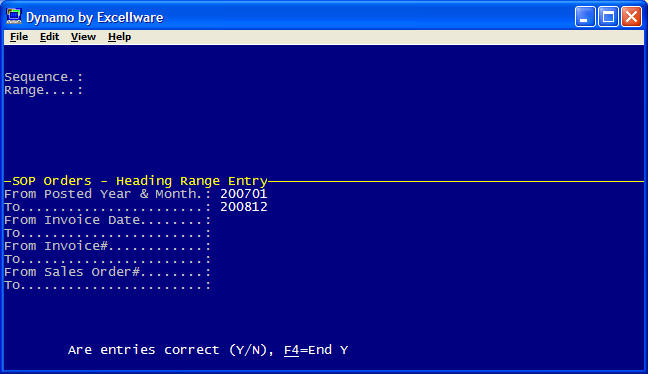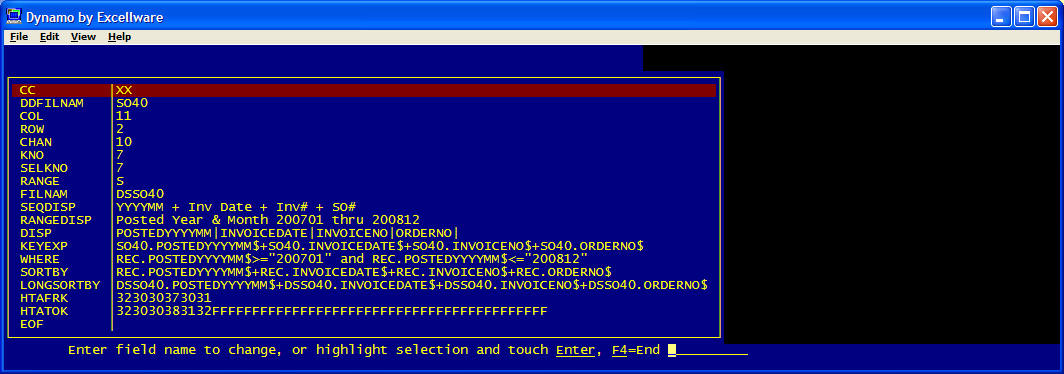CDS553
|
Driver Entries |
CDS553 is used to prompt operator to choose the sequence and range of a multi-keyed file. The sequence corresponds to the KNUM's. CDS553 is typically called by reports. CDS553 will open a channel that the application reads from to obtain the records in the sequence and range selected. In most cases, CDS553 will open the data file using the SELECT verb. But if there are multiple KNUM's that are similar, it is possible that the SELECT verb will not use the KNUM based on the operator entries. In that case CDS553 will use the OPEN verb.
Unlike the previous version of the Driver entry program, CDS003 and CDLIST33/CDS003, CDS553 cannot be called by the menu processor before running the report. In order to display the selected sequence and range, as well as modify these entries before printing, CDS553 is called by the application program during the other operator entries section.
Calling Format:
CALL "CDS553", ERR=XXXX, Y$, S553$ {, REC$, RECK$ }
All arguments after S553$ are optional.
| CDS553 Arguments | |||||||||||||||||||||||||||||||||||||||||
|---|---|---|---|---|---|---|---|---|---|---|---|---|---|---|---|---|---|---|---|---|---|---|---|---|---|---|---|---|---|---|---|---|---|---|---|---|---|---|---|---|---|
ERR=XXXX
|
Branch to XXXX if operator uses F4 to exit, if data file cannot be opened, or if the data dictionary is missing or invalid. | ||||||||||||||||||||||||||||||||||||||||
Y$
|
Standard task control variable. | ||||||||||||||||||||||||||||||||||||||||
S553$
|
|
||||||||||||||||||||||||||||||||||||||||
REC$
|
Assigned by CDS553 as the templated string variable to be used when reading records. Normally the file name less the company code is used as the variable as in
CM01$, IM03$, etc. The application typically reads
from the data file using this variable, i.e., READ RECORD(S553.CHAN,END=DONE)CM01$. |
||||||||||||||||||||||||||||||||||||||||
RECK$
|
Assigned by CDS553 as the string used by the KGEN function to describe the files key structure. Needed when using
S553.EOF$ to determine if you are at the end of the range, or when using the
KGEN() function to derive the key for removal, etc. |
||||||||||||||||||||||||||||||||||||||||
CDS553 is normally called in the section of the program where all other operator entries are made. CDS553 is designed so that it can be called again using the selected entries as default, should the entries need to be made again.
| Example using CDS038 |
0100 REM "PO200 - 12/19/06 Purchase Order Listing
|
| Example showing all CDS553 fields |
4100 REM "CDS553 parameters
|
| Data Entry screen |

|
| S553$ field values |

|
